- 所属类别:实验室试剂
- 产品品牌:阿拉丁
- 价格区间:5000-10000
品牌货号 稳定性与储存 | 阿拉丁T751608 4℃保存。长期不使用可以-20℃保存。 |
|---|---|
| 英文名称 | UltraBio™8000 Transfection Reagent |
| 储存温度 | -20°C储存 |
| 运输条件 | 超低温冰袋运输 |
| 产品介绍 | UltraBio™8000转染试剂(UltraBio™8000 Transfection Reagent)是阿拉丁最新研发的一种以纳米材料为基础的最便捷的高效细胞转染试剂,达到甚至超过了国际主流转染试剂的转染效果,并且转染过程无须任何孵育时间,实现了细胞转染的至简操作。适用于把质粒、siRNA或其它形式的核酸包括DNA、RNA、寡核苷酸、以及核酸蛋白复合物或带负电荷的蛋白转染到真核细胞中,也可以用于活体动物的核酸转染以及用于基因治疗。UltraBio™8000转染试剂的纳米技术可保证其瞬时转染和稳定转染时的可靠性和稳定性。UltraBio™8000转染试剂使用特别便捷,无血清培养液和核酸及转染试剂可以直接混匀,质粒转染无需任何孵育时间,即可直接加入到细胞培养器皿内,实现了细胞转染的至简操作。UltraBio™8000转染试剂对于常见的哺乳动物细胞具有非常高的转染效率、重复性好、操作简单、通常观察不到细胞毒性,对于贴壁细胞和悬浮细胞都适用,特别适用于难转染的贴壁细胞。UltraBio™8000转染试剂由于几乎完全没有细胞毒性,从而在转染后无需进行细胞培养液的更换,在转染24-48小时后直接收集细胞进行蛋白表达鉴定即可。UltraBio™8000转染试剂经过对小鼠胚胎成纤维细胞NIH3T3、人胚胎肾细胞HEK293/HEK293T、宫颈癌细胞Hela、结肠癌细胞HCT116、肝细胞HepG2和肺癌细胞A549等多种细胞的测试,转染效率和Thermo公司的UltraBio™3000Transfection Reagent、Promega公司的ViaFect Transfection Reagent相当,在一些细胞中甚至比UltraBio™ 3000和ViaFect的转染效率更高。贴壁细胞转染试剂的比较和选择请参考:http://www.aladdin-e.com。UltraBio™8000转染试剂不仅适用于质粒、siRNA等单一成分的细胞转染,也适合多个质粒或者质粒与siRNA等的组合转染。UltraBio™8000转染试剂转染过表达质粒后,通常24-48小时后达到较高的蛋白表达水平,并且很多情况下蛋白表达量在转染后48小时显著高于转染后24小时;转染siRNA通常3-5天后对于目的基因的下调水平会比较理想。UltraBio™8000转染试剂转染细胞时,不受培养液中的血清和抗生素的影响,即可以在血清和抗生素存在的情况下进行细胞转染。UltraBio™8000转染试剂的转染效果可以通过转染表达EGFP等荧光蛋白的质粒进行快速鉴定。UltraBio™8000转染试剂与UltraBio™ 3000 Reagent转染效果比较请参考图1-8。每毫升本转染试剂大约可以转染10厘米培养皿40个、6厘米培养皿125个、6孔板250个孔、12孔板625个孔、24孔板1250个孔、48孔板2500个孔、96孔板6250个孔。 注意事项: 加大Lipo8000?转染试剂用量容易导致转染效率显著下降,请优先按照推荐的转染试剂用量进行转染。如有必要再调整用量。使用高纯度的DNA或RNA有助于获得较高的转染效率。对于质粒,可以使用阿拉丁生产的质粒大量抽提试剂盒进行抽提,以保证可以获得较高的转染效率。转染前细胞必须处于良好的生长状态。经测试即使在使用本产品转染后4-6小时更换细胞培养液,也不会对转染效率产生显著影响。如有必要,完全可以在转染后4-6小时更换细胞培养液。需自备不含抗生素的无血清培养液、Opti-MEM?培养液或普通的DMEM培养液。Lipo8000?转染试剂不能vortex或离心,宜缓慢晃动混匀。Lipo8000?转染试剂使用后请立即盖好盖子,避免长时间暴露在空气中,影响转染效率。本产品仅限于专业人员的科学研究用,不得用于临床诊断或治疗,不得用于食品或药品,不得存放于普通住宅内。为了您的安全和健康,请穿实验服并戴一次性手套操作。使用说明: 1.DNA转染:a.细胞培养(以六孔板为例,其它培养板或培养皿可参考六孔板):在转染前一天(18-24小时)按照每孔约20-70万细胞(具体的细胞数量据细胞类型、大小和细胞生长速度等而定)接种到六孔板内进行培养,使第二天细胞密度能达到约70-80%。b.在进行下述转染步骤前,把培养有细胞的六孔板每孔换成2ml新鲜培养液(含有血清和抗生素的完全培养液)。对于Lipo8000™转染试剂,抗生素的存在不会影响转染效率,也不会在细胞转染后导致细胞毒性。c.参考下表,取一个洁净无菌离心管,对于待转染的六孔板中每一个孔的细胞,加入125μl不含抗生素和血清的DMEM培养液(高糖DMEM或低糖DMEM均可)或Opti-MEM® Medium,加入2.5μg质粒DNA,并用枪轻轻吹打混匀;再加入4μl Lipo8000™转染试剂,用枪轻轻吹打混匀,请特别注意不可Vortex或离心。配制完成后,室温存放6小时内稳定。96-well48-well24-well12-well6-well 6cm dish10cm dish无血清培养液或Opti-MEM® Medium5μl12.5μl25μl50μl125μl 250μl750μlDNA100ng250ng500ng1μg2.5μg 5μg15μgLipo8000™转染试剂0.16μl0.4μl0.8μl1.6μl4μl 8μl24μl加入DNA后轻轻混匀,加入Lipo8000™转染试剂后轻轻混匀,随后可以直接进入下一步,无须室温孵育。每孔加入的混合物的量5μl12.5μl25μl50μl125μl 250μl750μl按照上述用量每孔均匀滴加Lipo8000™转染试剂和DNA的混合物,直接继续培养,后续无需在数小时后更换培养液注1:对于六孔板中一个孔的细胞,Lipo8000™转染试剂的用量可以在2-6μl范围内进行适当调节,DNA用量建议固定在2.5μg,但也可以在1-4μg的范围内进行适当调节。通常质粒用量(μg)和Lipo8000™(μl)的用量比例为1:1.6或1:2.5比较常用,如有必要可以在1:0.5-1:5的范围内优化转染效果,上表推荐的比例为1:1.6,此时Lipo8000™的用量相对较少,既经济又高效。**的转染条件,因不同的细胞类型和培养条件而有所不同,可以在上述推荐范围内自行优化转染条件。注2:质粒的浓度宜控制在0.5-5μg/μl范围内。注3:对于多个孔转染相同数量相同质粒的情况,可以把每个孔所需的Lipo8000™转染试剂和DNA按照相应倍数加大用量,然后一起混合在同一个离心管内,后续混匀后,可以按照推荐用量滴加到细胞培养器皿内。注4:对于其它培养板或培养器皿,各种试剂的用量可以按照细胞培养器皿的培养面积按比例进行换算。如果转染寡核苷酸或RNA等可以参考转染DNA的条件进行。d.无论贴壁细胞还是悬浮细胞,按照六孔板每孔125μl Lipo8000™转染试剂-DNA混合物的用量,均匀滴加到整个孔内,随后轻轻混匀。e.继续培养约24-48小时后,即可用适当方式检测转染效果,例如荧光检测、Western Blot、ELISA、报告基因等,或加入适当的筛选药物如G418等进行稳定细胞株的筛选。2.siRNA转染:a.细胞培养(以六孔板为例,其它培养板或培养皿可参考六孔板):在转染前一天(18-24小时)按照每孔约20-70万细胞(具体的细胞数量据细胞类型、大小和细胞生长速度等而定)接种到六孔板内进行培养,使第二天细胞密度能达到约70-80%。b.在进行下述转染步骤前,把培养有细胞的六孔板每孔换成2ml新鲜培养液(含有血清和抗生素的完全培养液)。对于Lipo8000™转染试剂,抗生素的存在不会影响转染效率,也不会在细胞转染后导致细胞毒性。c.参考下表,取一个洁净无菌离心管,对于待转染的六孔板中每一个孔的细胞,加入125μl不含抗生素和血清的DMEM培养液(高糖DMEM或低糖DMEM均可)或Opti-MEM® Medium,加入100pmol siRNA,并用枪轻轻吹打混匀;再加入4μl Lipo8000™转染试剂,用枪轻轻吹打混匀,请特别注意不可Vortex或离心。配制完成后,室温存放6小时内稳定。96-well48-well24-well12-well6-well 6cm dish10cm dish无血清培养液或Opti-MEM® Medium5μl12.5μl25μl50μl125μl 250μl750μlsiRNA4pmol10pmol20pmol40pmol100pmol 200pmol600pmolLipo8000™转染试剂0.16μl0.4μl0.8μl1.6μl4μl 8μl24μl加入siRNA后轻轻混匀,加入Lipo8000™转染试剂后轻轻混匀,室温孵育20分钟。每孔加入的混合物的量5μl12.5μl25μl50μl125μl 250μl750μl按照上述用量每孔均匀滴加Lipo8000™转染试剂和siRNA的混合物,直接继续培养,后续无需在数小时后更换培养液注1:对于六孔板中一个孔的细胞,Lipo8000™转染试剂的用量可以在2-6μl范围内进行适当调节,siRNA用量可以在50-250pmol的范围内进行适当调节。通常siRNA用量(pmol)和Lipo8000™(μl)的用量比例为25:1,如有必要可以在10:1-40:1的范围内优化转染效果,上表推荐的比例为25:1,此时Lipo8000™的用量相对较少,既经济又高效。**的转染条件,因不同的细胞类型和培养条件而有所不同,可以在上述推荐范围内自行优化转染条件。注2:siRNA的推荐浓度为20μM,常用的浓度范围为10-50μM。注3:对于多个孔转染相同数量相同质粒的情况可以把每个孔所需的Lipo8000™转染试剂和siRNA按照相应倍数加大用量,然后一起混合在同一个离心管内,后续混匀后,可以按照推荐用量滴加到细胞培养器皿内。注4:对于其它培养板或培养器皿,各种试剂的用量可以按照细胞培养器皿的培养面积按比例进行换算。如果转染寡核苷酸或RNA等可以参考转染DNA的条件进行。d.无论是贴壁细胞还是悬浮细胞,按照六孔板每孔125μl Lipo8000™转染试剂-siRNA混合物的用量,均匀滴加到整个孔内,随后轻轻混匀。e.继续培养约2天左右后,即可用适当方式检测siRNA对于靶基因的下调效果,例如qPCR、Western、ELISA、报告基因等。对于有些半衰期比较长的目的基因需要在转染siRNA或miRNA后3-5天,才能检测到RNA或蛋白水平的显著下降。常见问题:1.转染效率低:a.优化质粒与Lipo8000™转染试剂比例,对于难转染的细胞,可适当增加Lipo8000™转染试剂的用量。b.应使用高纯度、无菌、无污染物的质粒进行转染,DNA纯度方面A260/A280比值要接近1.8,通常宜控制在1.8-1.9范围内,偏低则有可能有蛋白污染,偏高则有可能有RNA污染。可以使用阿拉丁生产的质粒大量抽提试剂盒进行抽提,以保证可以获得较高的转染效率。c.贴壁细胞转染时状态良好,细胞密度达70-80%时才可进行转染,过稀或过密都可能影响转染效率,不同细胞的**转染密度需要自行摸索。悬浮细胞宜在对数生长期进行转染。d.需使用无抗生素和无血清培养液配制Lipo8000™转染试剂和质粒或siRNA等的混合物。e.转染后培养时间不足,而被误以为转染效率偏低。不同细胞转染后至显著表达所需要培养的时间通常为24-48小时。f.检查细胞是否有支原体感染,支原体感染会影响细胞增殖,并很可能影响转染效率。g.使用传代次数相对较少的细胞,细胞传代次数太多,对转染效率会有一定的影响。h.如果没有检测到目的蛋白表达,应该仔细核对转染质粒的测序结果,确保测序结果和读码框完全正确。启动子、复制起始位点、质粒大小都会影响基因表达水平。i.如果靶基因的敲减(knockdown)效果欠佳,应该考虑尝试设计不同的siRNA。2.出现一定程度的细胞毒性:a.转染前,细胞至少铺板 18-24 小时。b.质粒用量不变,Lipo8000™转染试剂的用量减少 25%。例如通常六孔板每孔使用 2.5μg 质粒,4μl Lipo8000™,如果发现有细胞毒性,六孔板每孔可以尝试使用 2.5μg 质粒,3μl Lipo8000™,此时经测试对于转染效率没有很明显的影响。c.减少质粒用量,按照比例减少 Lipo8000™转染试剂;或在前者的基础上 Lipo8000™转染试剂用量再减少 25%。d.检查是否转染时细胞密度太低,Lipo8000™转染时细胞密度以 70-80%为佳。e.某些细胞对 Lipo8000™转染试剂比较敏感,可以在转染后 4-6 小时更换细胞培养液,转染效率无显著影响。f.检查细胞是否有支原体等微生物污染。附录:常用多孔板和培养皿的尺寸、培养面积、细胞培养量和推荐的培养体积等相关数据表:Multiple Well Plates or DishesSingle Well Only for PlatesDiameter (Bottom, mm)*Growth Area(cm2)*Average Cell YieldTotal Well Volume (ml)WorkingVolume (ml)Recommended Volume (ml)6 well34.89.59.5 × 105 16.81.9-2.9212 well22.13.83.8 × 105 6.90.76-1.14124 well15.61.91.9 × 105 3.40.38-0.570.548 well11.00.959.5 × 104 1.60.19-0.2850.2596 well6.40.323.2 × 104 0.360.10-0.200.1384 well2.70.0565.6 × 103 0.1120.025-0.0500.0301536 well1.63 × 1.63**0.0252.5 × 103 0.01250.005-0.0100.0103.5 cm dish3499.0 × 105 NA1.8-2.726 cm dish52212.1 × 106 NA4.2-6.3510 cm dish8.4555.5 × 106 NA11-16.51215cm dish141521.5 × 107 NA30.4-45.63524.5cm dish22.4 × 22.4**5005.0 × 107 NA100-150120*Diameter and growth area may vary depending on the manufacturer, and the listed sizes are from Corning. **These wells or dishes are square.Aladdin's UltraBio™8000 Transfection Reagent is a highly efficient and easy-to-use reagent for nanomaterial-mediated nucleic acid delivery. It demonstrates comparable or superior transfection performance to other commercially available transfection reagents. It is versatile for delivery of siRNA or other forms of nucleic acids including DNA, RNA, oligonucleotides, and nucleic acid protein complexes or negatively charged proteins into eukaryotic cells, as well as for nucleic acid transfection of live animals and gene therapy. The nanoparticle technology of the UltraBio™8000 Transfection Reagent ensures the reliability and stability of both transient and stable transfections of cells.The UltraBio™8000 Transfection Reagent is extremely easy to use. Cell transfection can be achieved by mixing the UltraBio™8000 Transfection Reagent directly with the serum-free culture medium and nucleic acid. Cell transfection with plasmid even does not need incubation, which minimize the operation time significantly. The UltraBio™8000 Transfection Reagent has been tested on mouse embryonic fibroblast cells NIH3T3, human embryonic kidney cells HEK293/HEK293T, cervical cancer cells Hela, colon cancer cells HCT116, hepatocytes HepG2 and lung cancer cells A549. The UltraBio™8000 Transfection Reagent yield high transfection efficiency comparable to UltraBio™ 3000 Transfection Reagent and Promega's ViaFect™ Transfection Reagent. In some cells it delivers more efficiently than UltraBio™ 3000 and ViaFect™ transfection. For more comparison and selection of transfection reagents for adherent cells, please visit http Precautions: Transfection efficiency may decrease with the increase of Lipo8000™ Transfection Reagent. Start with the recommended dosage in the protocol. Optimize the dosage only when necessary.Use high quality DNA or RNA to achieve a higher transfection efficiency. Plasmid Mass Extraction Kit (D0026)from can be used for plasmid purification to ensure a high transfection efficiency.Cells must be in an optimum physiological condition for transfection.Changing medium 4-6 hours after transfection does not interfere with the transfection efficiency. If necessary, culture medium can be changed 4-6 hours after transfection.Antibiotic-free and serum-free culture medium, such as Opti-MEM® culture medium or DMEM culture medium, is required but not supplied in this product. Mix the Lipo8000™ Transfection Reagent gently. Vortex or centrifuge should be avoided.Close the Lipo8000™ tube tightly to avoid the exposure of the transfection reagent to air, which may reduce the transfection efficiency.This product is for R&D only. Not for drug, household, or other uses.For your safety and health, please wear lab coats and disposable gloves while handling kit reagents . Instructions for Use: 1.DNA transfection(General protocol for transfection of adherent and suspension cells in a 6-well plate): a.The day before transfection (18-24 hours), seed about 200-700,000 cells per well in 6-well plates, depending on the cell type, size and the growth rate of cells. At the time of transfection, the optimal confluency for adherent cells is 70-80%. Suspension cells should be in logarithmic growth phase at the time of transfection. b.Prior to the following transfection steps, replace with 2ml of fresh culture medium (complete medium containing serum and antibiotics) per well. The presence of antibiotics does not affect the transfection efficiency of Lipo8000™ Transfection Reagent, nor cause cytotoxicity after transfection.c.Preparation of Lipo8000™ Transfection Reagent/DNA complexe: For each well of a 6-well plate, mix 2.5µg of plasmid DNA gently by pipetting with 125µl of antibiotic-free and serum-free DMEM culture medium (either high or low sugar DMEM) or Opti-MEM® Medium in a sterile eppendorf tube, followed by adding 4µl of Lipo8000™ Transfection Reagent. Mix well gently by pipetting. Vortex or centrifuge should be avoided. The Lipo8000™ Transfection Reagent/DNA complexes are stable for up to 6 hours at room temperature. 96-well48-well24-well12-well6-well6cm dish10cm dishSerum-free culture medium or Opti-MEM® Medium5μl12.5μl25μl50μl125μl250μl750μlDNA100ng250ng500ng1μg2.5μg5μg15μgLipo8000™ Transfection Reagent0.16μl0.4μl0.8μl1.6μl4μl8μl24μlMix DNA with medium gently first, and then add Lipo8000™ Transfection Reagent. Mix well gently. Incubation is not necessary. Note 1: The dose of Lipo8000™ Transfection Reagent can be appropriately adjusted in the range of 2-6μl for each well of a 6-well plate. DNA dosage is recommended to be fixed at 2.5µg, but can be adjusted in the range of 1-4µg. A DNA (μg): Lipo8000™ (μl) ratio of 1:2 or 1:3 is generally used, but can be ranging from 1:0.5 to 1:5 for optimal transfection efficiency. The ratio in the above table is 1:2 with a lower dosage of Lipo8000™, which is both economical and efficient. The optimal transfection condition varies depending on the cell type and culture conditions, and can be optimized within the range recommended above.Note 2: The concentration of plasmids should be in the range of 0.5-5µg/μl.Note 3: A mastermix can be prepared when transfecting multiple cell samples with same plasmids at same amount, and then distribute the recommended volume to each well.Note 4: For other formats of cell culture vessels, the dose of each reagent can be scaled up or down accordingly based on the culture area of cell culture vessels. For transfection of oligonucleotides or RNA, please refer to the protocol for DNA transfection.d.Add 125µl of Lipo8000™ Transfection Reagent/DNA complexes to each well. Gently rock the plate to ensure an even distribution of the complexes in the well, and continue to culture directly without changing the culture medium.e.Incubate at 37℃in a CO2 incubator for 24-48 hours. Harvest cells and examine the transfection efficiency by appropriate methods such as fluorescence assay, Western Blot, ELISA, reporter gene etc. To obtain cells with stable transfection, grow cells in selective medium with antibiotics such as G418.2.siRNA transfection:a.The day before before transfection (18-24 hours), seed about 200-700,000 cells per well in 6-well plates, depending on the cell type, size and the growth rate of cells. At the time of transfection, the optimal confluency for adherent cells is 70-80% . Suspension cells should be in logarithmic growth phase at the time of transfection. b.Prior to the following transfection steps, replace wells with 2ml of fresh culture medium (complete medium containing serum and antibiotics) per well. The presence of antibiotics does not affect the transfection efficiency of Lipo8000™ Transfection Reagent or cause cytotoxicity after transfection.c.For each well of a 6-well plate, mix 100pmol of siRNA gently by pipetting with 125µl of antibiotic-free and serum-free DMEM culture medium (either high or low sugar DMEM) or Opti-MEM® Medium in a sterile eppendorf tube, followed by adding 4µl of Lipo8000™ Transfection Reagent. Mix well gently by pipetting and incubate at room temperature for 20 minutes prior to transfection. Vortex or centrifuge should be avoided. The Lipo8000™ Transfection Reagent/siRNA complexes are stable for up to 6 hours at room temperature.96-well48-well24-well12-well6-well6cm dish10cm dishSerum-free culture medium or Opti-MEM® Medium5μl12.5μl25μl50μl125μl250μl750μlsiRNA4pmol10pmol20pmol140pmol100pmol200pmol600pmolLipo8000™ Transfection Reagents0.16μl0.4μl0.8μl1.6μl4μl8μl24μlMix gently after adding siRNA, add Lipo8000™ Transfection Reagent and incubate for 20 minutes at room temperature. Note 1: The dose of Lipo8000™ Transfection Reagent can be appropriately adjusted in the range of 2-6μl for each well of a 6-well plate. siRNA dosage can be adjusted in the range of 50-250pmol. A siRNA (pmol): Lipo8000™(μl) ratio of 25:1 is generally used, but can be ranging from 10:1 to 40:1 for optimal transfection efficiency. The ratio in the above table is 25:1 with a lower dosage of Lipo8000™, which is both economical and efficient. The optimal transfection condition varies depending on the cell type and culture conditions, and can be optimized within the range recommended above.Note 2: The recommended concentration of siRNA is 20µM. A siRNA concentration ranging from 10µM to 50µM is generally used.Note 3: A mastermix can be prepared when transfecting multiple cell samples with same siRNA at same amount, and then distribute the recommended volume to each well.Note 4: For other formats of cell culture vessels, the dose of each reagent can be scaled up or down accordingly based on the culture area of cell culture vessels. For transfection of oligonucleotides or RNA, please refer to the protocol for transfection of DNA.d.Add 125μl of Lipo8000™ Transfection Reagent/siRNA complexes to each well. Gently shake the plate to ensure an even distribution of the complexes in the well, and continue to culture directly without changing the culture medium.e.Incubate at 37℃ in a CO2 incubator for more than 48 hours. Analyze the expression of target gene by appropriate methods such as qPCR, Western Blot, ELISA, reporter gene etc. For genes with a long half-life of mRNA, a significant decrease in mRNA or protein levels might be detected 3-5 days after transfection with siRNA or miRNA.FAQ:1.Low transfection efficiency:a.Optimize the ratio of plasmid to Lipo8000™ Transfection Reagent. Increase the amount of Lipo8000™ Transfection Reagent for cells that are difficult-to-transfect.b.Use highly purified, sterile and contaminant-free plasmids for transfection. High purity DNA should have a A260/A280 ratio ranging from 1.8 to 1.9. Transfection Reagent might be toxic to some cells with low cell density.b.Use same amount of DNA or siRNA, but reduce the amount of Lipo8000™ Transfection Reagent by 25%. For example, instead of 2.5µg of plasmid and 4µl of Lipo8000™ used regularly, mix 2.5µg of plasmid and 3µl of Lipo8000™ for each well of a six-well plate to avoid cytotoxicity, which has no obvious effect on transfection efficiency.c.Reduce the amount of plasmids and also Lipo8000™ Transfection Reagent proportionally. If not working, reduce the amount of Lipo8000™ Transfection Reagent further by 25% .d.Make sure cell density is not too low at the time of transfection. Adherent cells should be 70-80 % confluent and suspension cells should be in logarithmic growth phase at the time of transfection.e.Some cells are sensitive to Lipo8000™ Transfection Reagent. Replace the medium containing transfection reagent with new growth medium 4-6 hours post-transfection, which does not affect transformation efficiency.f.Check cells for mycoplasma or other microorganism infection.Appendix:Data sheets relating to the size, culture area, cell culture volume and recommended culture volume of commonly used multi-well plates and petri dishes:Multiple Well Plates or DishesSingle Well Only for PlatesDiameter (Bottom, mm)*Growth Area(cm2)*Average Cell YieldTotal Well Volume (ml)WorkingVolume (ml)Recommended Volume (ml)6 well34.89.59.5 × 10516.81.9-2.9212 well22.13.83.8 × 1056.90.76-1.14124 well15.61.91.9 × 1053.40.38-0.570.548 well11.00.959.5 × 1041.60.19-0.2850.2596 well6.40.323.2 × 1040.360.10-0.200.1384 well2.70.0565.6 × 1030.1120.025-0.0500.0301536 well1.63 × 1.63**0.0252.5 × 1030.01250.005-0.0100.0103.5 cm dish3499.0 × 105NA1.8-2.726 cm dish52212.1 × 106NA4.2-6.3510 cm dish8.4555.5 × 106NA11-16.51215cm dish141521.5 × 107NA30.4-45.63524.5cm dish22.4 × 22.4**5005.0 × 107NA100-150120*Diameter and growth area may vary depending on the manufacturer, and the listed sizes are from Corning. **These wells or dishes are square. |
- 购买人 会员级别 数量 属性 购买时间
- 商品满意度 :
-







公司名称:探究者科学器材(江苏)有限公司
全国客服热线:4006-765-543
地址:江苏省宿迁市经济技术开发区富民大道88号A12栋
邮编:223800
咨询/订货

关于探究者
售后服务
会员中心




本网站销售的所有产品仅用于工业应用或者科学研究等非医疗目的,不可用于人类或动物的临床诊断、治疗或实验,不可药用,不可食用。
订购指南
Copyright © 2025 探究者科学器材(江苏)有限公司 All Rights Reserved 苏ICP备2025173400号-1






